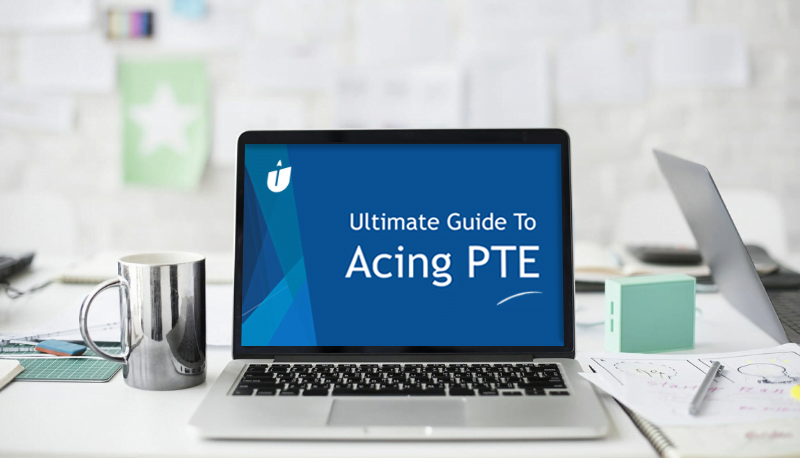PTE is a skill. Like any other skill, you can prepare for PTE in a smart way. It can be deconstructed and learned very quickly if you only focus on the critical elements.
In this post, I am going to share with you tips and strategies that will help you get 79+ Score in PTE.
I know the feeling when you endlessly search on google “How to score 79+ in PTE” or “Prepare for PTE“, and all you end up finding are similar generic answers that are written to get traffic to the website instead of providing real smart strategies.
And I also understand how difficult the English language looks like when you are coming from a non-native English background – because even I never used to speak English until I was 20 years old.
The secret is: You don’t need to be good in English to score high in PTE.
There is a smarter way to prepare for PTE.
In the same way I got 90 / 90 Score in my PTE, in the first attempt, and all these other readers of Ultimate Academy got 79+ or even straight 90s in PTE.
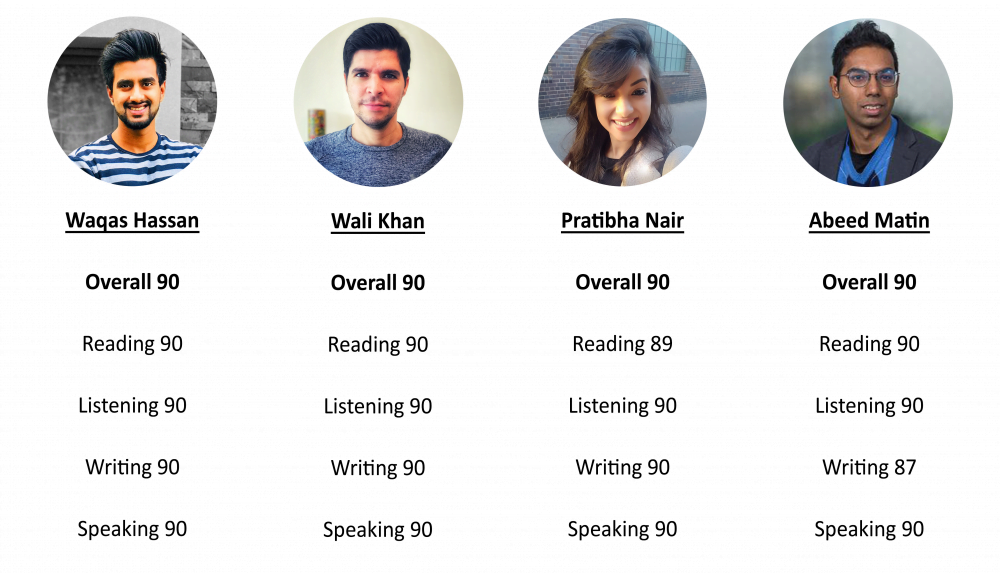

By the way, this post is from the full online video course, Ultimate Guide To Acing PTE, in which I share in-depth tips and strategies to get 79+ in all 4 modules of PTE.
It is exclusively for Ultimate Academy subscribers.
You can access the course below:
[wd_hustle id=”12″ type=”embedded”/]

Let’s now dive into what is the smart way to prepare for PTE for 79+ score.
There are 2 things you need to know to prepare for PTE the smart way.
- All Tasks Are NOT Created Equal.
- Smart Strategies To Solve Each Task When You Are A Non-Native English Speaker.
Let’s get into them one-by-one.
1) All Tasks Are NOT Created Equal
The table below shows you the relative importance of each task in your typical PTE exam.
As you can see in the last column of the table, I’ve highlighted them in 4 different colours:
Red – There are 4 tasks that are highlighted in red. These are the most important ones. If you are not good at these, you can’t get 79+. You will even struggle to stay above 65+.
Green – There are 4 tasks that are highlighted in green. I would say these are equally important to solidify your chances of securing 79+.
Yellow – Thirdly, you have 3 tasks that are highlighted in yellow. You can make mistakes in these. If you fumble in one or two of these, you can still score a borderline 79.
Grey – The rest of the tasks are highlighted in grey. These are the ones that you can afford to do as quickly as possible as they don’t carry much weightage. Even if you get these wrong, you can comfortably land a 79+.
Note: The actual score of each task might vary in each exam depending on how many tasks you get for each type, but the relative priority stays more or less the same.
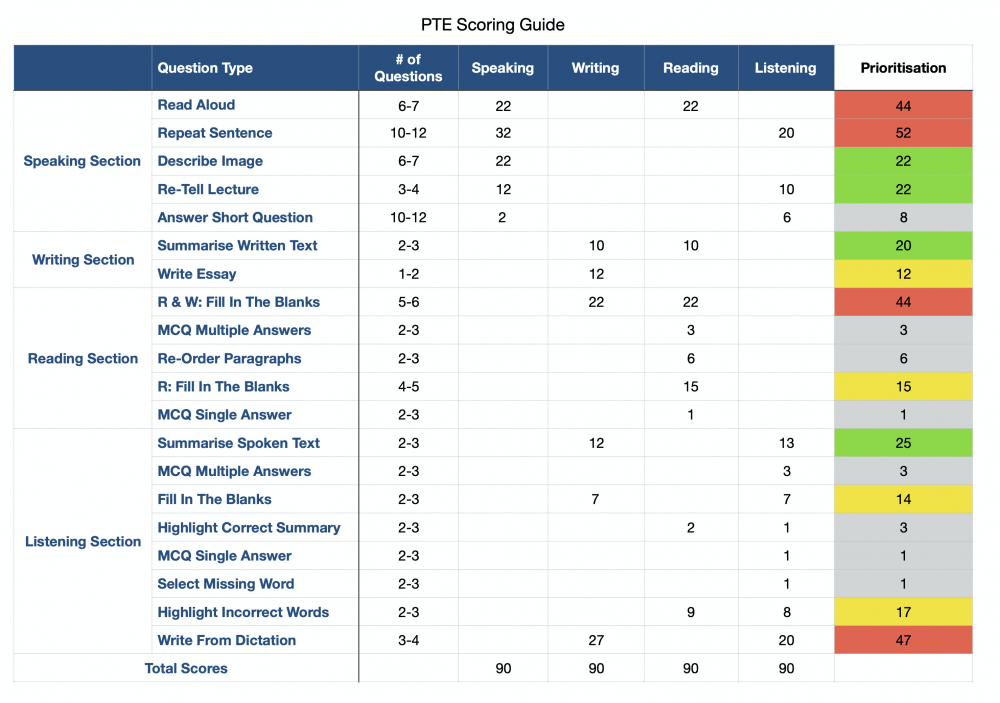
Another thing you notice in the table above is that most of the tasks contribute marks towards more than just one component.
For example, let’s take the first task: Read Aloud.
If you are fluent and have a good pronunciation when doing this task, but you miss out 1-2 words in the sentence, you will still score very high in your Speaking score.
However, you will be surprised to see that your Reading score will drop tremendously even if you end up doing all the 5 tasks in the Reading section perfectly.
This is true for most of the tasks. They contribute scores to more than one component.
In summary, the first part to prepare for PTE and managing time the smart way is to focus more on tasks that carry higher weightage.
2) Smart Strategies To Solve Each Task
Whenever I have to learn anything new in life, I follow a Total Immersion Principle.
That is, for 3-6 months, I absorb myself into that craft and read up every material ever produced on that subject.
I did the same for PTE.
I blocked off 6-months in my year to go through every book, every online course, and every mock test I could find on PTE. By the end of it, I had solved as many as 5000+ tasks.
This process helped me to deconstruct complex tasks, spot repeating patterns, and formulate the most effective strategy of solving each type of task in the PTE exam.
Here, I am going to share 4 examples, one from each section (Speaking, Writing, Reading, and Listening), of solving PTE Tasks the smart way.
4 Examples To Prepare For PTE The Smart Way
Task 1: Describe Image in PTE Speaking

Overview
- This task contributes only towards Speaking score
- You will have 25 seconds to prepare and 40 seconds to record your answer
- You will get 3-4 of these questions
- The image in this task could be a bar chart, line chart, pie chart, diagram, table, map, or combination of any of the two
Example
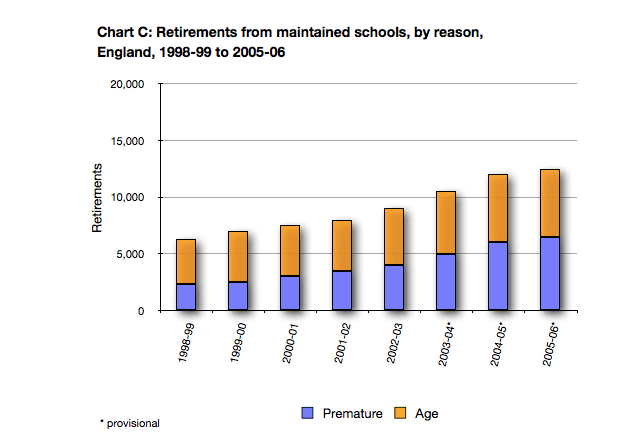
Strategy
Step 1) Planning
You will first get 25 seconds to study the image. Do not make notes for this task. There is no time for it.
If you try making notes, you won’t be able to identify the key features in 25 seconds.
Instead, your job in the 25 seconds is to make mental notes of 3 major points.
Never more or less. Always just 3 major points.
And these 3 major points will be as follows:
- First major point is always the overall trend
- Second and third major points are either comparison and/or the maximum & minimum
Step 2) Structure of Your Response
Your response will always follow this structure:
- Introduction sentence: This graph represents [title] over [x-axis]
- First sentence: Overall trend shows…
- Second sentence: First key feature of this graph is…
- Third sentence: Second key feature of this graph is…
- Conclusion sentence: In conclusion, [repeat overall trend]
You will have 40 seconds to record your answer for this task.
Ideally, you will be spending 5 seconds to speak the Introduction sentence, 25 seconds to speak the main body and the last 5 seconds for the conclusion.
PTE algorithm is designed to pick up structure and keywords.
When you respond to any question in the above-given structure, it not only helps the algorithm to make sense of your answer but also helps you to answer comfortably by following a template.
Step 3) Your Response
Let’s put steps 1 and 2 together to look at a sample response for the diagram given above.
- Intro sentence:
This graph represents [retirements from maintained schools by reason in England] over [the period of 1998 to 2006]
- First sentence:
Overall trend shows that retirements have increased from about 6500 to 12500 in both the categories.
- Second sentence:
The increase in retirements in Premature category has been most significant as they represented about 30% of all retirements in 1998-99 period while they represent 50% in 2005-06 period.
- Third sentence:
Although retirements increased sharply from 2001 onwards, the rate seemed to have decreased from 2004 onwards.
- Conclusion sentence:
In conclusion, retirements are increasing in both Age and Premature categories.
And that is it!
In a very simple and structured manner, you have responded back with a perfect 90 answer for this Describe Image task.
This was just an overview of how you respond to the Describe Image task in a smart way. In the video course, you will learn in detail how to respond to every type of chart in the Describe Image section.
We will also go into detail of strategies for each type of task in the Speaking section with live demos of applying those strategies to real tasks to make sure you prepare for PTE to get 79+ in your Speaking Test.
Task 2: Summarise Written Text in PTE Writing

Overview
- This task contributes towards both Writing & Reading scores
- A text of up to 300 words will be given
- You will get 10 minutes to read it & summarize it in ONE sentence of a maximum of 75 words
- There will be 2-3 of these tasks in the test
Example
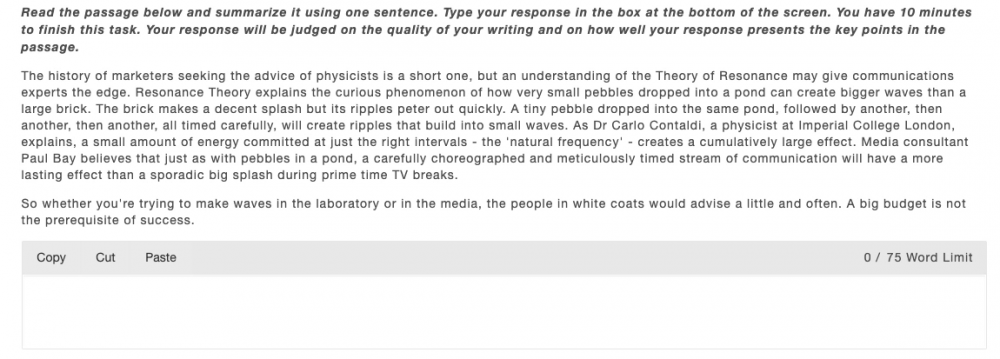
Strategy
Step 1) Planning
Your ONE sentence summary usually follows this order:
This happened, which led to this, and as a result this.
This means that you are looking for 3 sentences (3 key ideas) from the passage that can then be combined into the given format.
Remember, you are not summarizing the entire text and you don’t need to give specific details, such as a list of names or places.
You are supposed to write it in your own words, but borrowing keywords helps score higher as the algorithm picks those up.
Step 2) Using 10 Minutes Strategically
Your success in this task will depend on breaking down 10 minutes into these 4 parts:
- 2 minutes to comfortably read and thoroughly understand the passage
- 3 minutes to write 3 major points from the passage (don’t do a summary in the head)
- 4 minutes to combine those 3 points into ONE sentence
- 1 minute to recheck for grammar and spelling
For the above example, take 2 minutes to comfortably read the passage and ponder over it to understand it.
Next, take 3 minutes to write the 3 major points that you pick up from the passage.
Here are mine:
- Marketers can learn from Theory of Resonance in physics – small pebbles thrown at regular intervals create bigger impact than one big brick at once.
- Instead of prime time TV splash, marketers should design a constant stream of communication at right intervals for long lasting effect.
- Big budget does not always result in big success.
Now, we will spend 4 minutes to combine these into ONE sentence.
Step 3) Your Response
It will look something like this:
The principle of Theory of Resonance, which says that small pebbles thrown at regular intervals create bigger impact than one big splash of brick, can be applied to marketing as well; thus, instead of marketing through one big prime time TV splash, if marketers design a more cost-effective and constant stream of communication at right intervals, they can achieve long lasting effect without spending big budgets at marketing. [68 words]
What do you notice above? Do you see a secret trick being used to connect two sentences?
That secret trick is using a linking word with a semicolon.
You can always write a sentence, and then write “;” and start a new part of the sentence with “as a result”, “consequently”, “thus”, etc.
This way you can comfortably connect two sentences which you are otherwise finding difficult to connect.
This was just an overview and one secret trick of using the smart strategy to solve the Summarise Written Text task. We will spend a great deal of time with a lot of examples to go into an in-depth understanding of these tasks in the video course.
We will also go into detail of strategy for each type of task in the Writing section with live demos of applying those strategies to real tasks to make sure you prepare for PTE to get 79+ in your Writing Test.
Task 3: Re-Order Paragraphs in PTE Reading

Overview
- You will see a paragraph that is all jumbled up
- Your task is to put it back in the right order
- You will get 2-3 of these tasks
Example
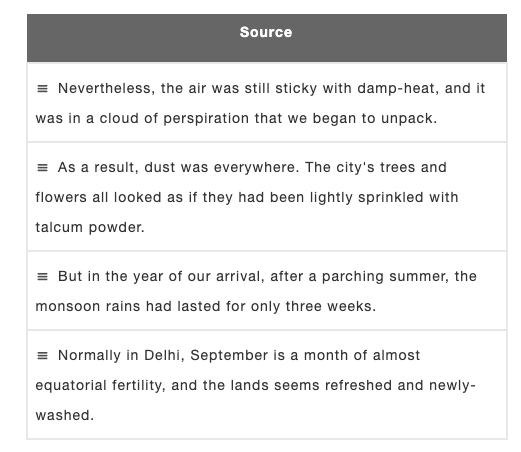
Strategy
Step 1) Find The Independent Sentence
Your first task is to find the independent sentence that becomes the first sentence for your correct order. Once you have found the independent sentence, everything else starts falling in place.
But the question is how do you find the independent sentence?
By using these characteristics for the independent sentence:
- Might have a proper noun (e.g. the name of city, person, place, or anything)
- Should not start with the linking word, such as therefore, so, as a result, etc.
- Should not be referring back to anything through a pronoun, such as he, she, it, they, etc.
For the example above, by using Step 1, we can quickly identify that the first three sentences can’t be the independent sentences. This is because:
- All three sentences are starting with a linking word: Nevertheless, As a result, and But
- The fourth sentence has proper nouns, such as Delhi and September
So the first sentence of the correct order will be:
Normally in Delhi, September is a month of almost equatorial fertility, and the lands seem refreshed and newly washed.
Step 2) Making The Flow
The “flow” is a state where every next sentence will directly refer to something in the preceding sentence.
For example, two references to the time period won’t be separated by many sentences. They will usually be next to each other.
In our example, the first sentence has a reference to the time period: September.
So the next sentence can also have a reference to the time period.
Among the remaining three sentences left, only one of them has a reference to the time period.
But in the year of our arrival, after a parching summer, the monsoon rains had lasted for only three weeks.
I will leave you to find the flow for the next two sentences.
Do note however that using the reference word is just one trick. Most of the time, you can always just understand from the meaning of the sentence that it is a continuation of the previous one.
Step 3) Your Response
Finally, you can use a few more tricks to get to the right order:
- When you are confused about one or two sentences. Skip those and still form a logical sequence of other sentences. Then when you will look again at the missing sentences, you’d know where to place them.
- The last sentence, just like the first sentence, is easier to spot because it has a conclusion-tone of the story.
- When not 100% sure, try making any other order to see if that holds. You can always drag and drop them into boxes in random order. You will realise it is easier for your mind to see different orders to understand which one looks correct.
- Lastly, you get 1 point for each correctly aligned sentence, so for example, if it is a 5-sentence paragraph and you get 3 sentences in the right order and 2 sentences wrong, you will still get a +3 score for that task.
In our example, here is the final response:
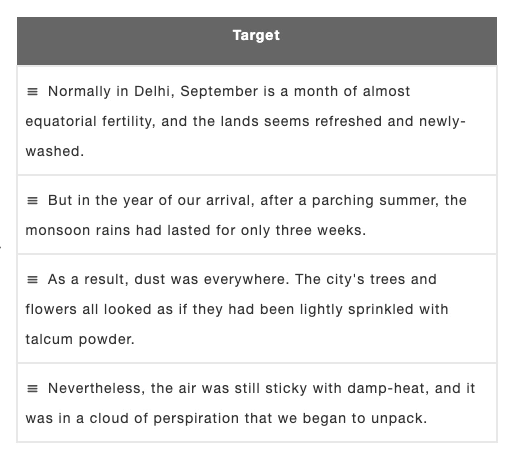
You might find it slightly difficult to understand how we reached here by just reading this article. That is why, in the video course, I go into a lot of detail of using the strategy and I share live demos of doing these questions with explanations.
We will also go into detail of strategy for each type of task in the Reading section with live demos of applying those strategies to real tasks to make sure you prepare for PTE to get 79+ in your Reading Test.
Task 4: Summarise Spoken Text in PTE Listening

Overview
- You will listen to a lecture and write a summary of 50-70 words in your own words
- It is better to write close to 70 words to maximise content score as computer algorithm picks up keywords
- You will be given 10 minutes to complete each task and you should use all of those 10 minutes
- If you complete it earlier and press next, the remaining time will not be carried forward
- It is better to use that time to recheck… or even to take a breather
- You get 1-2 of these tasks in your test
Example
Strategy
Step 1) Smart Note-Taking
This task can’t be responded effectively without smart note-taking.
The dumb way to take notes is to try to write as much as you can from what you hear.
A lot of trainers will suggest you to use shorthand or abbreviations to fit in as much as you can.
But all these are wrong strategies.
In contrast, when you take notes the smart way, you will actually be writing much less and it will be more effective for your actual response.
Here is how the structure of Smart Note-Taking looks like:
Main Idea > Reason > Example/Support
All the lectures follow either two or three main ideas. Mostly only two.
What I will train you to do in the course is to hear for those main ideas and write them in your handbook using the Smart Note-Taking methodology.
For example, in the recording above, once you learn to take notes the smart way, your handbook will only have this:
Some states are more equal than others > most rich, industrial and influential are called G7 > US is most important among G7 since World War 2
It has designed institutions for powerful countries > such as IMF WTO WB > they help to exert global dominance, global influence over other countries
These notes above are concise and they follow a structure that will help you to easily write your response to this task.
Step 2) Structure For Your Response
The ideal way to manage the time in this task is as follows:
- 3 minutes to make notes and arrange them
- 5 minutes to write your answer
- 2 minutes to recheck
Once writing your answer, you will always follow this template that will make it easier for you to write:
- The Speaker was discussing [the topic]
- He/She mentioned [first main idea > explanation]
- He/She also talked about / suggested [second main idea > explanation]
Step 3) Your Response
When we put our Smart Notes into the structure given in Step 2, this is how a 90-score answer looks like for this question:
The speaker was discussing how rich and powerful countries influence state decisions of other countries. He mentioned that the most influential countries are known as G7, and even among them, since World War 2, United States has the most dominant role in designing the institutions to have global dominance. He suggested that G7 countries created institutions, such as IMF and World Bank, to have global control over other countries.
In the full video course, we will go into a lot of detail of learning Smart Note-Taking, which will help you in all the Listening tasks.
We will also understand in-depth the strategies for each task with live demos of applying those strategies to real tasks to make sure you prepare for PTE to get 79+ in your Listening Test.

In the complete online video course, I share with my students hacks, tips, strategies roadmaps, and examples of implementing techniques to prepare for PTE the smart way to score 79+ in all the 4 components.
I also give the question bank of real PTE questions because, in the PTE exam, the same question bank gets shuffled. This means the more you practice, the more predictable it becomes.
On top of that, I will show you live demos of solving 100+ real PTE questions using the strategies explained for each type of task.
You can access the course below:
[wd_hustle id=”12″ type=”embedded”/]

